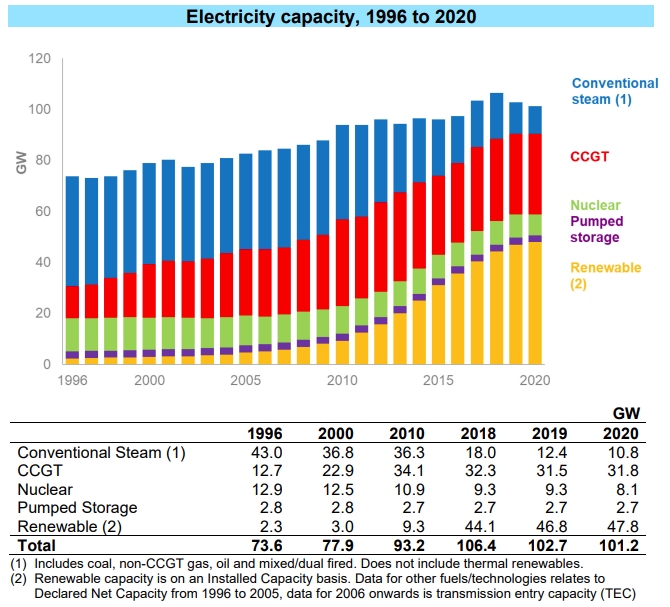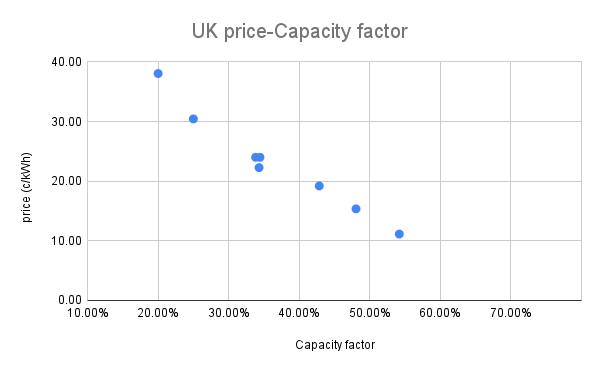|
It has become common for mainstream media to assert that solar and wind are the cheapest source of electricity. However if we examine the price of electricity to consumers of electricity in markets where solar and wind have become a significant source of electricity we find that the price of electricity has risen significantly in them all. Price is what matters. Using the narrow definition of the cost of electricity generation, commonly called the levelized cost of electricity (LCOE) , wind and solar are cheap and can compete with fossil fuels in some markets. However LCOE just measures the cost of electricity where it is attached to the grid. The cost of transmission and distribution and managing a reliable electricity supply has to be added to get the consumers price of electricity. It is false advertising to consumers to focus on LCOE. In two previous blog posts that cover the case for Germany, California and the US as a whole I discussed a simple explanation based on ample public data on electricity generation and electricity capacity. This enables a simple calculation of overall capacity factor. In capital intensive industries like electricity supply, the lower the capacity factor, the higher the price needed to fund the capital expense. Recently, the United Kingdom has also become a major economy that has a substantial percentage of its electricity generated from renewables, mainly wind and biofuels. Calculating the capacity factor for the UK from public data adds to the evidence of the previous three cases relating reduced capacity factor to higher electricity prices. The graphs above show historical UK generation in TWh and Capacity in GW. Using the data for the year 2000, the capacity factor was 54%. For 2020 capacity factor was 34%.. The 2020 price was 125% of the 2010 price set to 100% and the 2000 price was 58% relative to 2000. The graph below shows the UK data of price against capacity factor. As capacity factor falls, prices rise. Falling capacity factor explains higher prices, the same as for Germany, California and the US as a whole. Projecting this trend forward, as more intermittent renewables are added, capacity factor will continue to fall and price will continue to rise as shown in the graph above. As wind and solar get to be a larger percentage of generation, curtailment will set in. To fix this will mean adding storage, which will also add capacity, reduce capacity factor and drive prices even higher. The UK’s experience with wind volatility would say they will always have a need for backup power. From their experience, wind can disappear for long periods and wind generation can drop more than 20 GW in less than a day. There is also significant annual and seasonal variation, much like hydro power variation with droughts in California.
The electricity price could easily double from current levels which would be around five times the price of electricity from fossil fuel generation. The UK, Germany and the US may be able to afford this, but the developing world won't. The biggest strategic problem with high electricity prices is how it raises the price of anything that uses significant amounts of electricity. Clean industrial processes for manufacturing commodities like steel, aluminum, copper and other metals will be uneconomic along with manufacturing clean synthetic fuels and processes like desalination. All of these are essential parts of a clean energy transition. Cheap clean electricity is the essential base component of a clean energy transition. This is where Stratosolar comes in. Electricity for less than that generated using fossil fuels. By Edmund Kelly http://www.stratosolar.com/blog/projecting-the-rising-cost-of-electricity-to-consumers-from-increased-generation-from-intermittent-wind-and-solar http://www.stratosolar.com/blog/the-true-cost-of-intermittent-renewable-energy https://assets.publishing.service.gov.uk/government/uploads/system/uploads/attachment_data/file/1032260/UK_Energy_in_Brief_2021.pdf
Comments
|
Archives
December 2023
Categories
All
|
|
© 2024 StratoSolar Inc. All rights reserved.
|
Contact Us
|




 RSS Feed
RSS Feed